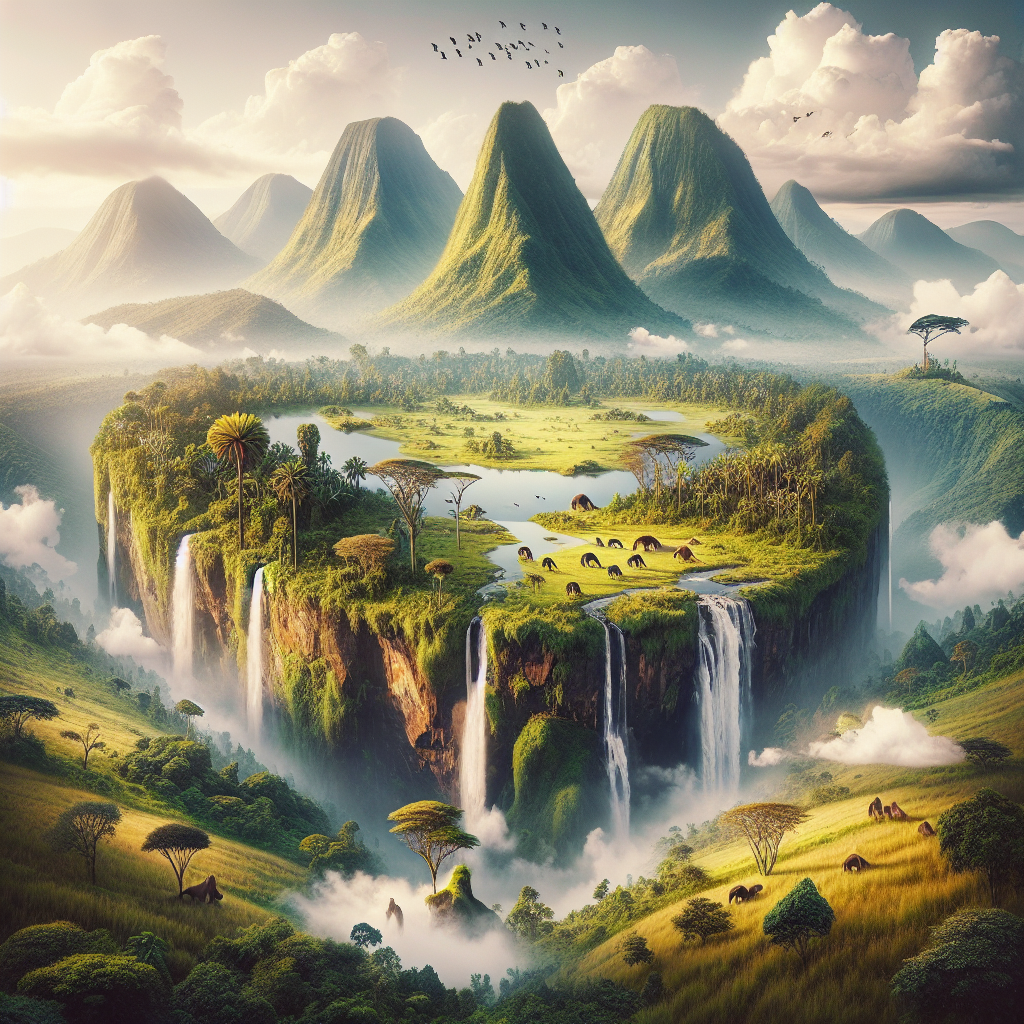Uganda, often referred to as the “Pearl of Africa,” is a country that never fails to impress, with its breathtaking landscapes, diverse wildlife, and vibrant cultures. For adventurous backpackers in search of natural wonders, Uganda offers an array of awe-inspiring destinations that promise unforgettable experiences. Here are the top 10 must-visit natural wonders in Uganda that should be on every adventurer’s list.
1. The Mighty Murchison Falls
Located in the largest national park in Uganda, Murchison Falls is a powerful waterfall on the Nile River. The falls are a breathtaking sight as the world’s longest river squeezes through a narrow gorge only 7 meters wide before plunging 43 meters down. The surrounding park is home to four of the Big Five, with elephants, lions, buffaloes, and leopards roaming freely, as well as giraffes and hundreds of bird species, making it a prime spot for wildlife enthusiasts.
2. The Mystical Bwindi Impenetrable Forest
A UNESCO World Heritage site, Bwindi Impenetrable Forest is renowned for its mountain gorilla populations. Trekking through the dense, mist-covered forests to encounter these gentle giants in their natural habitat is a profound and unforgettable experience. The park also boasts over 350 bird species, making it a paradise for bird watchers.
3. The Snow-Capped Rwenzori Mountains
Also known as the “Mountains of the Moon,” the Rwenzori Mountains offer some of the most stunning trekking landscapes in the world. Hikers can explore glaciers, snow-capped peaks, and beautiful alpine forests. The range’s highest peak, Mount Stanley, challenges even the most experienced climbers, but there are trails suitable for all levels of experience.
4. The Expansive Queen Elizabeth National Park
Boasting an impressive array of biodiversity, Queen Elizabeth National Park is a sanctuary for over 95 mammal species and 600 bird species. The park’s diverse ecosystems, including savanna, wetlands, and lowland forests, offer visitors the chance to see lions, hippos, elephants, and the elusive leopard. The unique tree-climbing lions of the Ishasha sector are a must-see.
5. The Tranquil Lake Bunyonyi
Surrounded by terraced hills, Lake Bunyonyi is a serene haven perfect for relaxation and adventure. It is Africa’s second deepest lake, dotted with 29 islands, each with its own story and history. Activities include canoeing, bird watching, and swimming (the lake is bilharzia-free).
6. The Sipi Falls
Nestled on the edge of Mount Elgon National Park near the Kenya border, Sipi Falls is a series of three stunning waterfalls, each flowing from a different altitude. The area offers breathtaking hikes, coffee tours, and the chance to abseil down the falls themselves for the truly adventurous.
7. The Pristine Kidepo Valley National Park
Located in the remote northeastern corner of Uganda, Kidepo Valley National Park is arguably the country’s most isolated national park, but it’s worth the journey. It boasts a vast savannah landscape, home to elephants, giraffes, zebras, and hundreds of bird species, with the scenic backdrop of mountain ranges on every side.
8. The Enigmatic Lake Mutanda
Set against the backdrop of the Virunga Mountains, Lake Mutanda offers a peaceful retreat in southwestern Uganda. The lake is perfect for canoeing, with stunning views of three volcanoes. It’s also an excellent base for gorilla trekking in the nearby Bwindi Impenetrable Forest.
9. The Astounding Semuliki National Park
Semuliki National Park, in the Albertine Rift valley, is home to one of Africa’s most ancient and biodiverse forests, extending into the vast Ituri Forest in the Democratic Republic of Congo. The park’s hot springs, Sempaya and Male, are extraordinary natural wonders where visitors can boil eggs in the hot springs as they marvel at the forest’s primordial beauty.
10. The Majestic Mgahinga Gorilla National Park
Part of the Virunga Conservation Area, this park is not only home to mountain gorillas but also offers the chance to trek the endangered golden monkeys. Mgahinga’s striking landscape is characterized by its three extinct volcanoes, providing challenging hikes and stunning panoramas.
Recreating the Experience
Bringing the essence of Uganda’s natural wonders back home can be a challenge, given the unique atmosphere and biodiversity found in the country. However, adventurers can recreate the experience by engaging in local conservation efforts, supporting wildlife charities, and educating others about the importance of preserving these natural wonders. Additionally, creating a photo journal or blog to share your adventures can inspire others to explore and protect these remarkable destinations.
FAQ
Q: Do I need any vaccinations to travel to Uganda?
A: Yes, visitors to Uganda are required to have a yellow fever vaccination. It’s also recommended to take precautions against malaria.
Q: Is it safe to backpack in Uganda?
A: Uganda is generally safe for backpackers, but it’s important to take usual travel precautions. Avoid traveling at night and keep your belongings secure.
Q: What is the best time of year to visit Uganda?
A: The best times to visit Uganda are during its two dry seasons: December to February and June to August, when wildlife viewing is at its peak.
Q: Can I go gorilla trekking without a guide?
A: No, gorilla trekking is strictly regulated, and visitors must be accompanied by a licensed guide to protect both the gorillas and the trekkers.
Q: How can I respect the environment while exploring Uganda’s natural wonders?
A: Practice Leave No Trace principles, such as disposing of waste properly, respecting wildlife, and minimizing your impact on the trails and natural sites you visit.
Uganda’s natural wonders offer some of the most extraordinary experiences in the world for adventurous backpackers. From the roaring Murchison Falls to the serene landscapes of Lake Bunyonyi and the thrilling encounters with mountain gorillas in Bwindi, Uganda beckons with the promise of adventure and discovery. By visiting these natural wonders, not only do you get to explore incredible landscapes and wildlife, but you also have the opportunity to support conservation efforts ensuring that these breathtaking places remain for generations to come.
